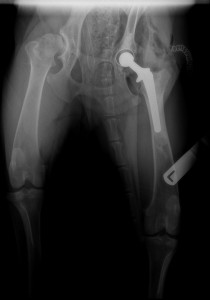-
Recent Posts
Archives
- October 2022
- August 2022
- May 2022
- March 2022
- January 2022
- December 2021
- September 2021
- July 2021
- June 2021
- May 2021
- April 2021
- February 2021
- January 2021
- November 2020
- October 2020
- September 2020
- June 2020
- April 2020
- March 2020
- February 2020
- January 2020
- December 2019
- November 2019
- October 2019
- September 2019
- June 2019
- March 2019
- February 2019
- January 2019
- December 2018
- November 2018
- October 2018
- August 2018
- July 2018
- June 2018
- May 2018
- April 2018
- March 2018
- February 2018
- January 2018
- December 2017
- November 2017
- October 2017
- September 2017
- August 2017
- July 2017
- June 2017
- May 2017
- April 2017
- March 2017
- February 2017
- January 2017
- December 2016
- November 2016
- August 2016
- July 2016
- June 2016
- May 2016
- April 2016
- March 2016
- February 2016
- January 2016
- December 2015
- November 2015
- October 2015
- September 2015
- August 2015
- July 2015
- June 2015
- May 2015
- April 2015
- March 2015
- December 2014
- June 2014
- May 2014
- April 2014
- November 2013
- September 2013
- August 2013
- July 2013
- June 2013
- May 2013
- March 2013
- January 2013
- November 2012
- October 2012
- July 2012
- December 2011
- November 2011
- October 2011
- September 2011
- August 2011
- July 2011
- June 2011
- May 2011
- April 2011
- March 2011
- February 2011
- January 2011
- December 2010
- November 2010
Categories
24 Veterinary Emergency NJ and Veterinary Surgeons
This is an x-ray from a Total Hip Replacement that Dr. Dan Stobie, NorthStar VETS, Chief of Staff, completed on a German Shepherd that was experiencing hip displaysia.
NorthStar VETS is proud to offer this pain relieving procedure to improve hip function, and allow your dog to return to an active life style.
THR is a procedure designed to eliminate discomfort by replacing the arthritic hip joint with an artificial joint. This is a state-of-the-art surgical procedure, very similar to the one performed on humans. The arthritic femoral head and neck are removed and replaced with a metal implant made of stainless steel and titanium. The arthritic socket is also removed and replaced with a silicone cup. Both components are held in place with sterile bone cement. The metal head and silicone cup fit and function like the original ball and socket joint, providing a pain-free, mechanically functional joint.
When Should Surgery Be Performed?
Surgery to replace the hip joint is recommended when chronic pain or limping are present. Radiographs of the hips are performed to confirm the diagnosis of degenerative arthritis. Surgery is indicated if conservative therapy via pain medication is not sufficient in relieving the limping or pain associated with the arthritis.
Are There Alternative Surgeries to THR?
Yes, a femoral head and neck ostectomy can be performed as an alternative procedure. The ball part (femoral head) is removed allowing a “false-joint” to form. Eventually, new tissue fills in between the bones allowing support and function of the limb. This surgery has a variable success rate with 20-25% of owners reporting low-grade gait abnormality or trouble jumping. Results are satisfactory to good, however, typically not as optimal as a total hip replacement. A triple pelvic osteotomy (TPO), a hip rotation procedure, can only be performed on young dogs (less than 12 months of age) with hip dysplasia prior to the development of arthritis. This surgery preserves the dog’s hip joint and prevents the progression of hip dysplasia. Results are good to excellent.
How Do Dogs Feel with Total
Hip Replacement?
Most dogs walk on their new hip immediately after surgery. Most pet owners report their dog’s personality improves and that their dog feels great. Gradual return to normal function occurs between 8-12 weeks after surgery. A long-term study found THR to be a very effective method for treating disabling conditions of the canine hip. The majority of dogs displayed marked improvement in walking, sitting, climbing stairs, standing, running, playing, and exercise following surgery. THRs have been performed in both pet and working dogs with equal success.
Is My Dog a Candidate for THR?
If your dog is over 12 months of age, weighs more than 45 lbs., and has clinical signs associated with hip arthritis or dysplasia, or has had a traumatic hip luxation, your dogis a potential candidate for hip replacement. A thorough examination to rule out other problems is always an important part of the preoperative evaluation.
NorthStar VETS’ team of board-certified surgeons have the experience and expertise to perform this advanced procedure.
*DISCLAIMER: If you feel you may be experiencing an emergency please contact us immediately at 609.259.8300
This entry was posted in Pets, Veterinary Medicine and tagged 24 hour emergency, 24 hour vet emergency, 24 hour vet hospital, allentown, animal emergency, avian, brick, cherry hill, clarksburg, dog emergency, exotics, freehold, hamilton, howell, jackson, lakewood, Mercer County, millstone, Monmouth County, New Jersey, New Jersey Dog, nj, NorthStar VETS, Ocean County, pet emergency, princeton, robbinsville, sick dog, toms river, total hip replacement. Bookmark the permalink.






Leave a Reply